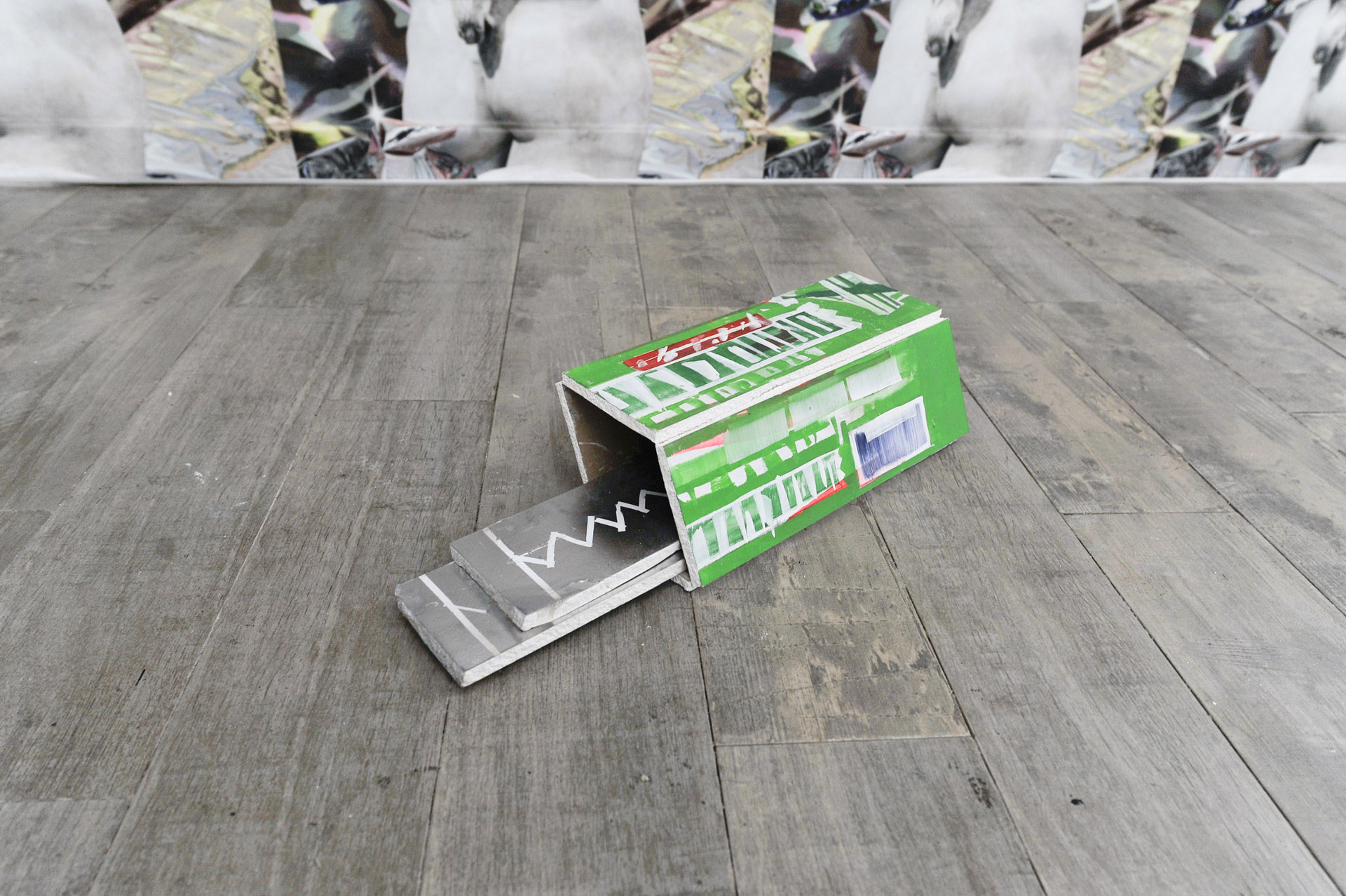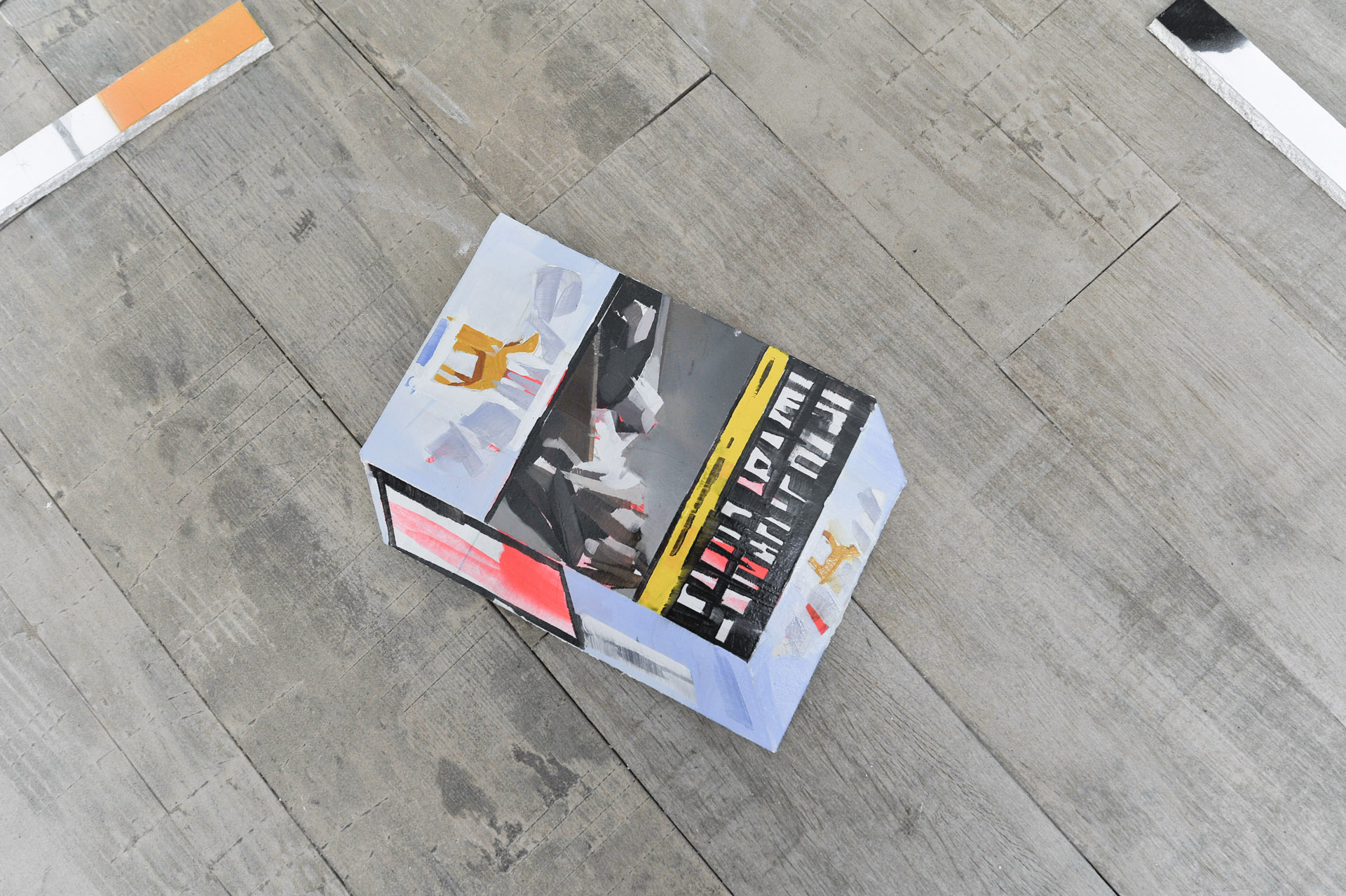Artists: Luca Grimaldi, Fabio Ranzolin
Exhibition title: What you don’t remember, you become
Curated by: Eleonora Aloise, Carlo Maria Lolli Ghetti, Chiara Garlanda
Venue: White Noise Gallery, Rome, Italy
Date: April 22 – May 22, 2021
Photography: all images copyright and courtesy of the artists and White Noise Gallery, Rome
It is the renowned novel “The Sun Also Rises” by Ernest Hemingway that popularized the term Lost Generation.
Getrude Stein is credited with coining the definition, particularly used to refer to 1920s and to all the people who came of age during the World War I, young men and women left disoriented and directionless. These young people adrift grew up in the turn of the century and found themselves incapable of using the principles of the pre-war society to navigate the world. They lived in the 1890s nostalgia, a romanticized period of apparent levity and well-being. This fake memory –the end of the XIX Century was not so harmonious after all- acquired its own identity: it is called Gay Ninetes in the United States, Naughty Nintes in the UK and partly also the Belle Époque holds this carelessness feeling.
100 years have passed from the Lost Generation, still, the term can be easily applied to the present time.
The XXI Century did not begin with a World War, but who became an adult during that time grew up during the years of the Great Recession that turned the world upside down, melting all the social structures and changing our way of interpreting reality.
This generation seems to be connected by the tendency of delaying the normal rites of passage into adulthood, by having lived the Internet explosion and, oddly, by the love for the 90s.
Today we are in 2021, the public gets excited for the sequels of the most popular films of those years, celebrates its nostalgia in the smash hits and the fashion industry persistently keeps offering its image from catwalks to street style. We see the coming back of some things we swore to never mention again.
The usual decade nostalgia cycle is nothing to be surprised about, but what makes the coming back of the 90s so interesting is how quickly it happened.
Young, melancholic adults are ready to sanctify a body that is still breathing, supported by ranks of teenagers who dream about fantastic years that they were not able to live, but from which are obsessed.
The 1990s are delimited by the fall of the Berlin Wall and the 9/11. It was everything but a peaceful time, characterised by the outbreak of the Gulf War, the Yugoslav Wars, in Italy by the Mani Pulite investigation and the Capaci bombing, only to mention a few historical moments. Although, today people remember that time as if it was a never ending party, years of incredible enthusiasm towards a future that seemed like a bright land of endless possibilities.
Today we are witnessing the glorification of a period that no one had the time to remember yet, a decade that doesn’t want to die and whose euphoria made way for the most complete disillusionment.
Millennials, people born between 1981 and 1996, when compared to previous generations, appear less keen on getting married, having children, being religious; they are increasingly well educated but still experience high levels of unemployment. More in general, traditional structures such as politics, family, religion, career, seem to have shuttered giving way to a widespread sense of loneliness, bewilderment and mistrust towards the system.
Several scientific studies have observed how nostalgia appears to be a coping mechanism in response to adversity or psychologically negative states, helping restore people to a psychological equilibrium. Researchers have also found that nostalgia makes us feel connected to one another through a shared past, and this past -thanks to Internet- has never been more accessible.
Just like the 90s of the Lost Generation, the modern 90s seem to represent the last moment of happiness for this generation always waiting. Waiting to grow up, get a permanent job, buy a house, have children.
To wait one’s turn seem to be like a basic requirement, but it is more an exercise in futility, in fact, one’s moment never comes.
Quello che non ricordi, diventi (What you don’t remember, you become), featuring Luca Grimaldi (Rome, 1985) and Fabio Ranzolini (Vicenza, 1993), is built around the nostalgia for a memory that cannot be formed yet. Still, it is able to create a powerful and anachronistic aesthetic, able to dominate on the different ages of a whole generation.
The two artists represent its two antipodes: Grimaldi is among the ones who lived the age fully, while Ranzolin joins the ones who can only recall it vaguely.
The zeitgeist of this moment is represented by those spaces that 30 years ago were the personification of that spirit of endless joy that everyone wants to preserve. In our memories there is no space for any shadow that could shade the infinite party that seem to have been the 90s. Discos, clubs and their population are coming back to haunts us; at the same time they look like images from a faded past and representations of the most present moment. After a first second of amused astonishment they turn out to be the symbol of the impossibility of moving on.
The installation Sweet pours like applause by Fabio Ranzolin, opens the exhibition path with a closed loop system that reflects the suffocating sense of imprisonment caused by the forced celebration. The venous system is powered by the eponymous cocktail, almost only known in Italy, and precisely famous for its bright colour and strong alcohol content. The liquid flows in circles, trapped just like those who were touched by the 90s magic seem to be unable to move forward from its memory.
The room is covered in posters (Orphans of Great Promises), representing a pastiche of everything that people want to treasure from those years, a sparkling freedom full of life, but often empty under its brightness. The artwork is a chaotic overlapping of images taken from different sources. The digital collage evokes flyers of 90s gay clubs and discos while its title sadly enhances the disillusion towards the future.
A cold light, 4 jelly candies, hair gel and two necklaces form the installation Un saluto a chi c’è stato e un saluto a chi è tornato. The title reminds of the claims shouted by Italian “vocalists” during disco parties while the different elements recall old teenage rituals, fetishized by nowadays adolescents unable to create their own codes and mythologies.
While Ranzolin celebrates the clubbing temple, Luca Grimaldi consecrates its body: ranks of proselytes receive the visitors in the second room. They are colossal and immovable like statues, painstakingly standing in line; a motionless humanity resembling millennials’ caricaturist identity, relegated in perpetual wait and frozen in a past that cannot come back and probably has never even existed.
These images stand in a double temporality and open to contrasting interpretations. They are figures that could be found in fashion magazine thirty years apart or in line out of the same club but in two different ages. What really seems estranging is how these people never changed; they are always the same, just aged without finding a new place to do it. Some new characters joined them, adopting their same habits that slowly became only a costume.
Time goes by but human beings are the same, they keep on crowding together in the same small space, all in line for the bathroom waiting to go back to a party that is already over.





















































